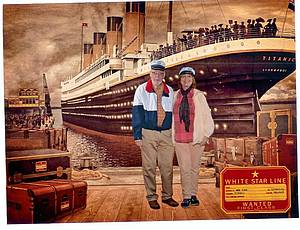Northern Ireland 2016
A trip to Northern Ireland July 2016
We visited Ireland, meaning the south of the island, the Republic of Ireland (Eire), with the capital Dublin, for the first time in 2000. It was a beautiful stay. During our round trip we often stayed overnight in various manors which are now used for accommodation of visitors. Small Longueville House, organizing ducks and pheasants hunts and fishing trips, romantic Caragh Lodge situated near a lake, Glin Castle, ancient building on the banks of the River Shannon full of original antiques and impressive fireplaces. We also saw the Druid Circle near town Kenmare and Limmerick and Dublin. Green Ireland, always hiding under the cover of fog or slight drizzle, famous for its music and step dancing, but also for its brilliant writers like Oscar Wilde, G.B. Shaw and James Joyce.
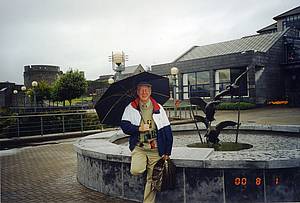
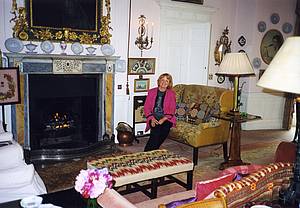
Limmerick Glin Castle
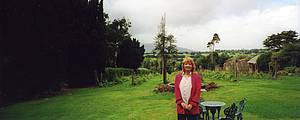
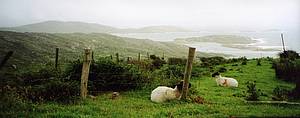
Longeville Pastures of Ireland
This time we decided to go to the Northern Ireland (Ulster), with the capital Belfast. In the past I heard about the city mostly in the evening news in connection with violence or I remembered it from the song Belfast by Boney M performed in 1977. George went frequently to Belfast for business trips in the eighties which was also one of the worst times for the country. He always flew from Liverpool to the Belfast City Airport, visited the harbor, which housed his main customer for blast grit, Harland and Wolff, and tried to fly back on the same day as stay overnight gave him a feeling of discomfort and danger. Belfast of that time was divided by up to seven meters high fences and walls into various sectors which separated the neighborhoods of Unionists (Protestants) and Republicans (Catholics). Any time when these two communities got in touch, there was a threat of violence. Even with the walls and strong army presence, the bombs were detonating and riots broke out frequently. The separated areas looked like cages - you entered an iron cage on one side, went through it on the other side, and you found yourself facing the members of different religion, potential enemies.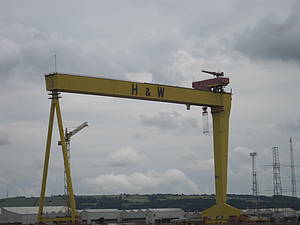
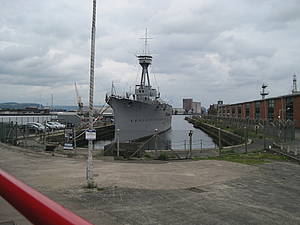

In the port - Harland and Wolf shipyards
Fortunately, such Belfast no longer exists. I was aware that the island used to be united until foundation of the Irish Free State consisting of 32 counties in 1921. The Irish Free State was to be a self-governing dominion of the British Commonwealth with similar local governments as in Canada or Australia. However, under this Anglo-Irish Agreement six counties of Northern Ireland had the right to decide if they wanted to withdraw from the Irish Free State, and be united with the UK - which they promptly did. The Agreement was ratified by Parliaments of both the countries in 1922. In 1937, the Irish Free State was renamed to Ireland (Éire). In 1949 it proclaimed itself a republic and left the Commonwealth.
Relatively peaceful period in Northern Ireland followed until the end of the sixties. The power was concentrated in hands of the Unionist Party, which had the support of most of the Unionists/Loyalists (i.e. those who favored the union with Britain). The Nationalists/Republicans, about two-fifths of the population of Northern Ireland, which is catholic, along with the rest living in the Irish Republic, shared desire for Ireland´s unification. The Nationalists did not hold any function in the government and at the local level they were exposed to systematic discrimination in many areas of public life, especially regarding voting rights, housing and employment. The conflicts were also supported by historical resentments between Protestants and Catholics. In 1968, like in many other European countries, there was an eruption of students´ movement in Northern Ireland who asked for more freedom. However, peaceful demonstrations were followed by a series of violent street conflicts in 1969. The death of number of civilians in 1972, known as Bloody Sunday, led to the formation of various paramilitary groupings on both sides (the main ones IRA – Irish Republican Army – on the Catholic side and the UDA - Ulster Defense Association - on the Protestant side). To avoid further bloodshed, the British government sent to Ulster its stationary troops, but they had never got the situation under complete control.
The discrimination against Catholics in the economic sphere in the eighties was experienced by George firsthand. He placed an order for unloading the ship with blast grit material with a certain company (this decision was based solely on economic parameters). When he named them to the management of his customer, shipyard Harland and Wolff, they informed that in such a case they would not be able to buy from him. The reason: the company chosen by George was catholic, Harland and Wolff from the top to the last cleaner protestant. George was left with no alternative and had to change the unloading company to a protestant one.
From 1969 up to the so called Good Friday Agreement (signed in Belfast 1998), in the period which is euphemistically called the Troubles (but was a fully fledged civil war), around 3 500 people from both sides were killed, over 100,000 people were injured, not speaking about incalculable damage to the psyche of children, youth, survivors and all involved. The European Union played a major part in helping to negotiate a ceasefire and in the subsequent signing of the Agreement. It also substantially assisted in the following economic development of the country. No wonder that the majority of the population of Northern Ireland voted in referendum 2016 against Brexit.
However, violence on a small scale breaks out sometimes until now because not everyone was happy with the Good Friday Agreement. Until today there remain some six meters high fences and walls with graffiti in Belfast which are removed only gradually. Our young guide told us that according to her opinion you would need to remove barriers in people's heads first, then it would be easy to demolish the real ones. In opinion poll 2012, 69 % of population of Belfast voted for provisional preservation of some of the walls as they still felt safer behind them. 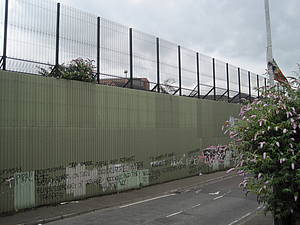
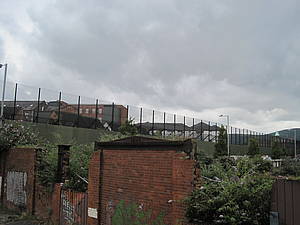
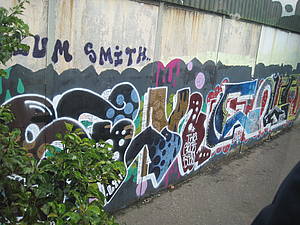
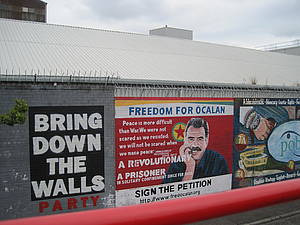
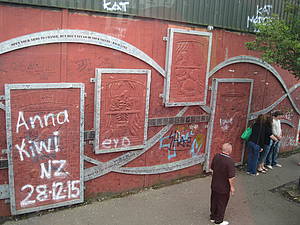
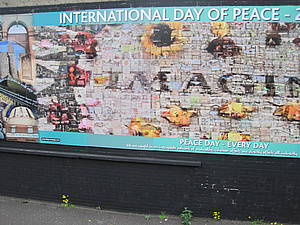
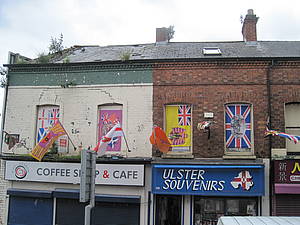
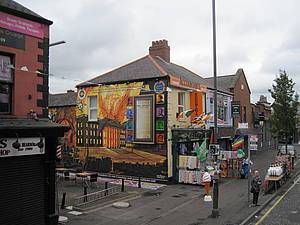
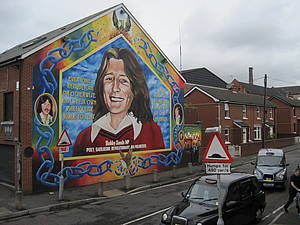
Anyway, Belfast, as we experienced it in 2016, has certainly changed beyond recognition. Repaired churches and other historical monuments (St. Anne's Cathedral, St. Patrick´s Church, Albert Memorial Clock, St. George´s Market Hall, City Hall, the Supreme Court, Grand Opera, Hotel Europa), commercial center with malls and little shops, restaurants and cafes around Victoria Street and in the University Quarter, downtown streets which are no longer divided by any iron cages, clean water in the river Lagan, where salmons allegedly returned after a long time, everything orderly and serene. We noticed whilst walking in the streets of Belfast that over average number of young and not so young people were tattooed and a high number of young females were overweight. Of course, I do not want to draw any conclusion out of that. According to the latest statistics Belfast ratio of crimes compared with population number is the second lowest in the world after Tokyo. And we really did feel safe in the streets of Belfast.
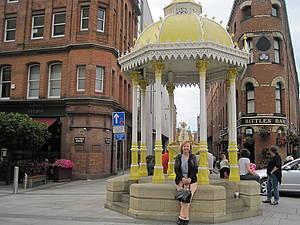
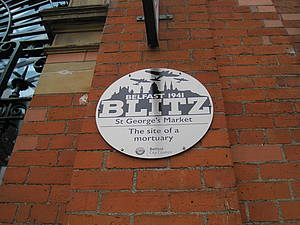
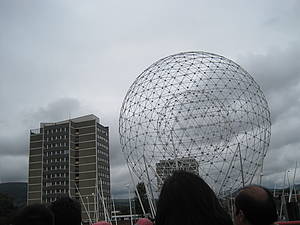
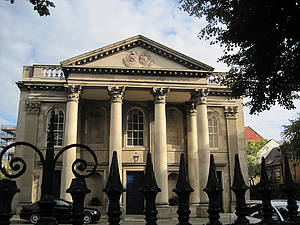
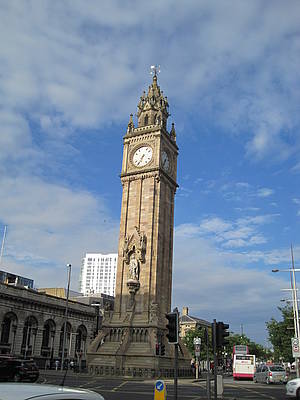
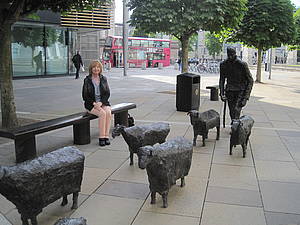
Obviously, a big help in the fight for peace is always education. Queen's and other universities in Belfast have at the moment around 25,000 students matriculated. Queen´s is at the same time one of the largest employers in the Northern Ireland. A progress has also been achieved in the health care system. The newly opened building of Royal Victoria Hospital Critical Care was inaugurated by Prince Charles. Apparently, Charles who is known as a fan of traditional historic architecture, did not like the new hospital too much and in an unofficial comment declared that it was one of the ugliest buildings he had ever seen. The inhabitants of Belfast with their typical sense of humor retaliated and immediately nicknamed the building Camilla. 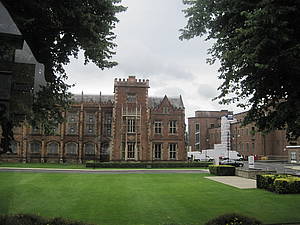
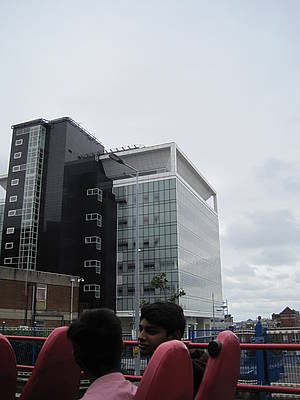
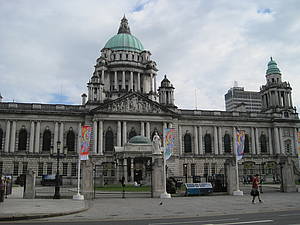
Queen´s University, Critical Care Victoria Hospital, Town Hall
The big attraction of Belfast is the Titanic Museum, which was built next to the spot from where the ship was launched in 1911. The museum tells the story of life in Belfast, which had at the turn of the 19th and 20th centuries one of the largest shipyards in the world. It shows documents about the life of entrepreneurs, artisans, and port workers. Carriages, similar to those in which people ride on a roller coaster, took us back to the end of the 19th century shipyard and gave us the feeling of participating in the construction of the ships through films and appropriate noises. The museum has also a collection of traditional Titanic memorabilia – furniture of the cabins of the first and third class, menus, lists of utensils and foodstuffs which had to be loaded on the vessel before the cruise, description of life stories of survivors and those who did not survive the wreckage.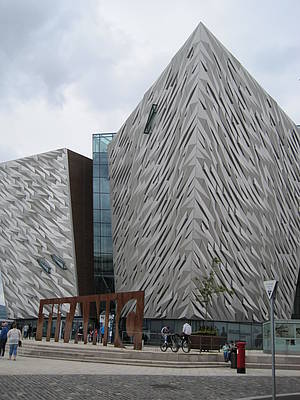
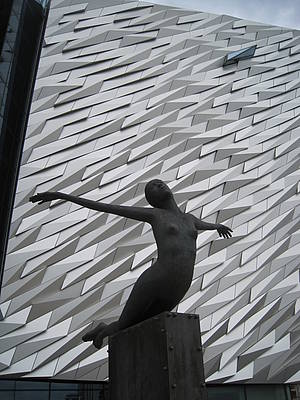
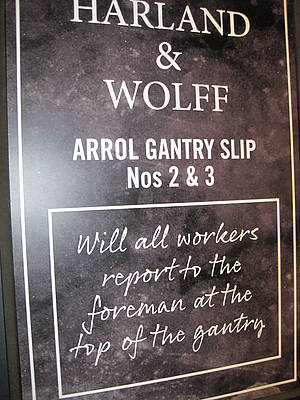
Northern Ireland, as well as the Republic of Ireland, abounds in natural beauty. It is very much green, with grazing sheep, cows and horses everywhere. Once I saw a unique combination of sheep herd together with at least thousand hens grazing on the meadow. We passed some whiskey distilleries and visited one of the oldest which produces Bushmills brand since 1608. There were also some ancient castles on the road to the north, like solid Carrick Fergus Castle or the ruins of Dunluce Castle. In the romantic hilly landscape along the coast there is a rope bridge connecting the mainland to the tiny island of Carrick-a-Rede, which hangs 60 meters above sea level - and is not suitable for those with phobia of heights. In the north east coast, there is Giant's Causeway, consisting of about 40 000 interlocking basalt columns, the result of an ancient volcanic eruption, a place connected with many legends. In this area some parts of the movie Game of Thrones , based on the first book in the fantasy series A Song of Ice and Fire by American author George R. R. Martin were filmed.
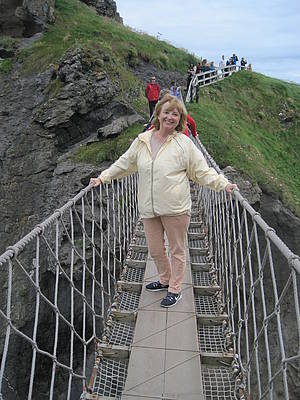
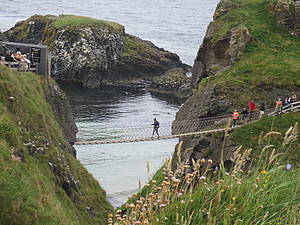
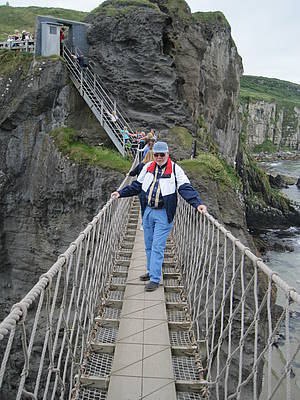
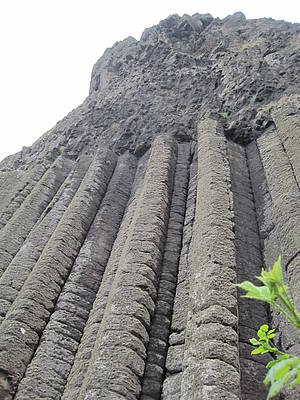
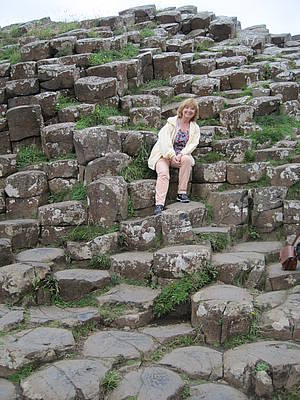
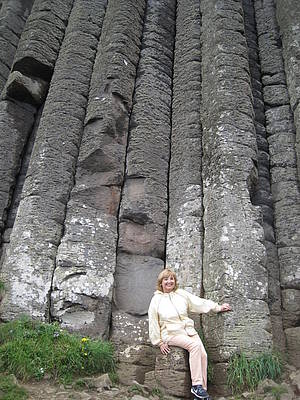
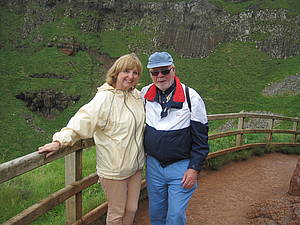
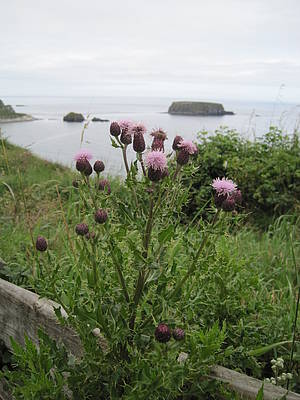
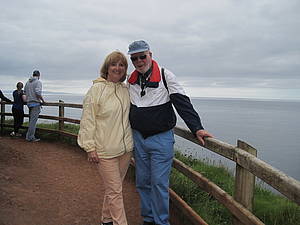
Young people with whom we came into contact during our stay, were full of optimism and good humor. Yet somehow it is still possible to feel a kind of undercurrents in Belfast as it is hard for the older generation to forget. If, due to Brexit, the people of Northern Ireland should once again attempt to leave UK and remain members of European Union, let us hope that this time it will take place without any violence.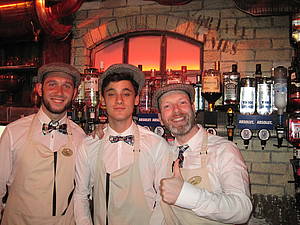
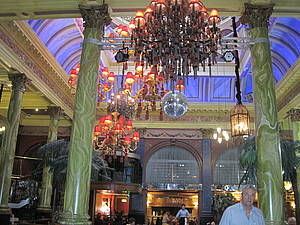
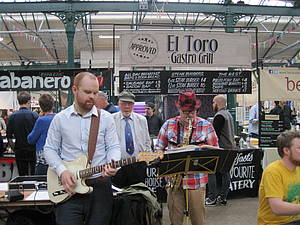
Luckily just missed the ship (as always too much luggage) 
